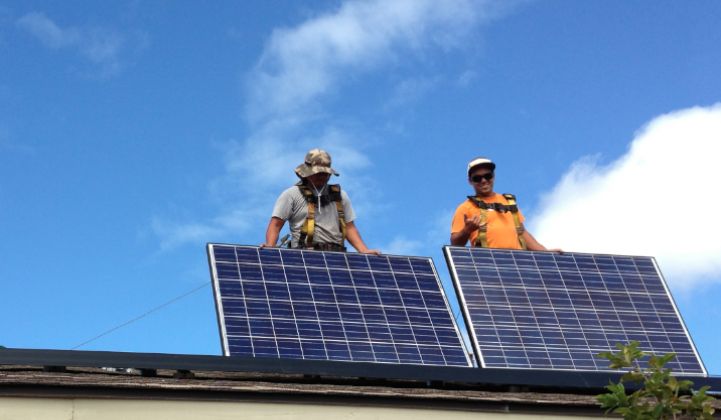Vivint Solar will expand its residential storage offerings in California with a new power-purchase agreement that packages batteries and solar into one monthly payment.
Previously, the No. 2 U.S. residential solar company had only offered PPAs for solar-plus-storage systems in the Hawaii market. Customers in California had to buy their batteries outright. But based in part on a recent survey of 315 California homeowners the company conducted in August, Vivint identified a likely spike in demand coming from the state. Forty percent of those surveyed reported thinking about buying home solar-plus-storage.
“The demand is pretty obvious,” said Thomas Plagemann, Vivint Solar’s chief commercial officer and the executive vice president of capital markets.
Of the survey respondents, 29 percent lived in the service territory of bankrupt Northern California utility Pacific Gas & Electric, which shut down power for millions in October in an attempt to prevent wildfires. Though Vivint conducted its survey before the latest outages, more than half of those surveyed had experienced an outage in the last couple of years that lasted longer than two hours. More than 60 percent of those surveyed said they expect to experience an outage in the next year.
On the company's most recent earnings call, Vivint Solar CEO David Bywater said the power shutoffs rendered “every door fresh...again” in terms of sales because many customers will be reconsidering solar-storage systems.
Compared to top competitors like Sunrun and Tesla, Vivint has been slower to pair batteries with its solar systems. It initially chose Mercedes-Benz Energy as an exclusive storage supplier partner in 2017. That alliance fizzled when Mercedes-Benz abandoned the home storage market a year later.
Since then, Vivint has offered storage in just two markets: Hawaii and California. But with demand for backup power rising, Vivint believes it can offer more Californians storage for reasons beyond storing solar production to dodge time-of-use charges, which make electricity more expensive in the evening peak hours.
“In California, the battery has two purposes: time-of-use shifting [and] potential for backup,” said Plagemann. “It’s a different pitch in California than it is in Hawaii.”
Under the solar-plus-storage PPA, customers are not charged for use of the battery; however, the rate for power the system produces increases slightly compared to a solar-only PPA.
Plagemann said Vivint also plans to add batteries to its lineup in the Northeast “very shortly,” but wouldn’t provide more specifics on a timeline.
Sunrun, the top residential solar company in the United States, offers both leases and PPAs in all nine of the states (plus Puerto Rico) where it currently offers its Brightbox energy storage product in tandem with its solar systems. Sunnova currently sells its SunSafe system, available in 12 markets, paired with solar through leases and loans. On its website, Tesla sells its Powerwall systems outright, although it's not immediately clear whether Powerwalls can be added to the company's solar subscription service, which was unveiled in August. Tesla did not respond to a request for comment on its current offerings of leases and PPAs for solar-plus-storage.
Storage systems attached to solar arrays are increasingly being financed through leases or PPAs as attachment rates climb, according to analysts at Wood Mackenzie Power & Renewables, but that could change as storage prices continue to decline. Many loan providers, including Mosaic, Dividend Finance and BlueWave solar, also offer financing for solar-plus-storage systems.
--
Now in its fifth year, the Energy Storage Summit will bring together utilities, financiers, regulators, technology innovators, and storage practitioners for two full days of data-intensive presentations, analyst-led panel sessions with industry leaders, and extensive, high-level networking.
